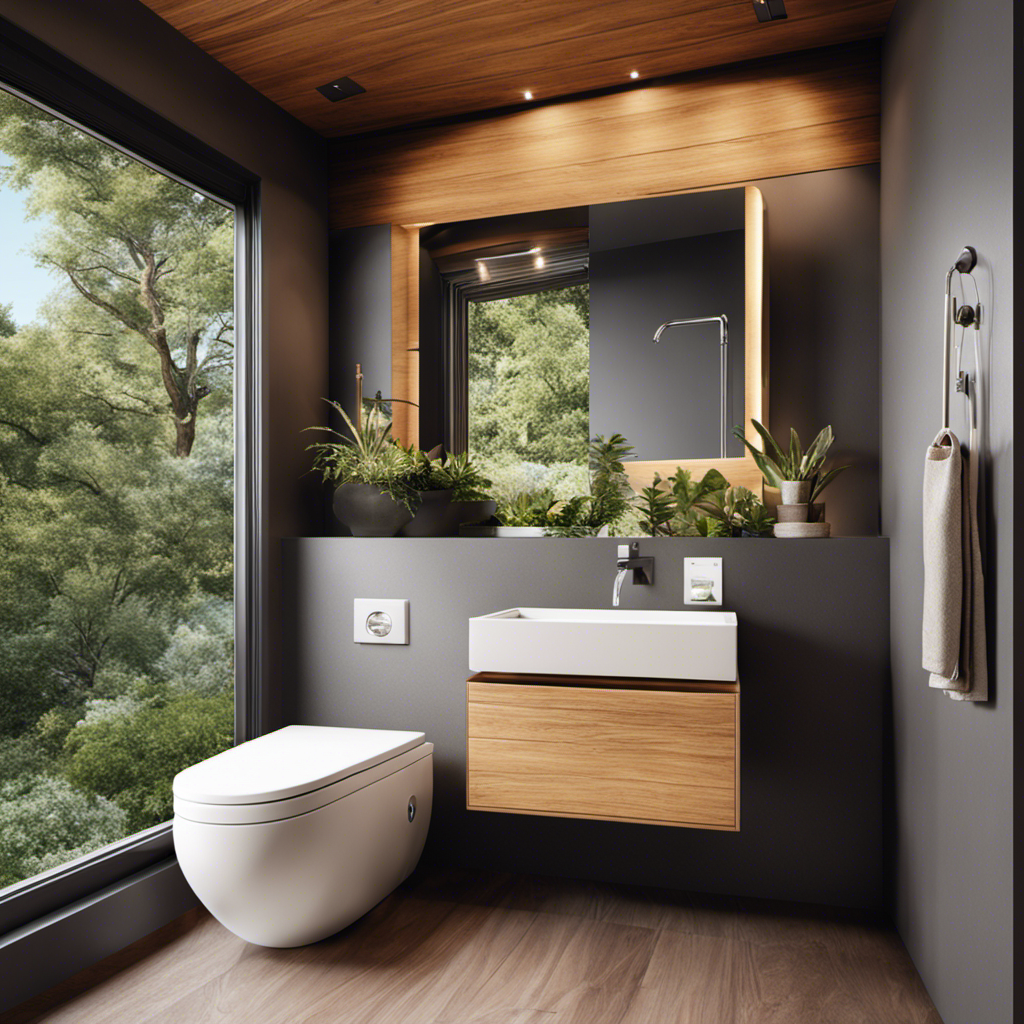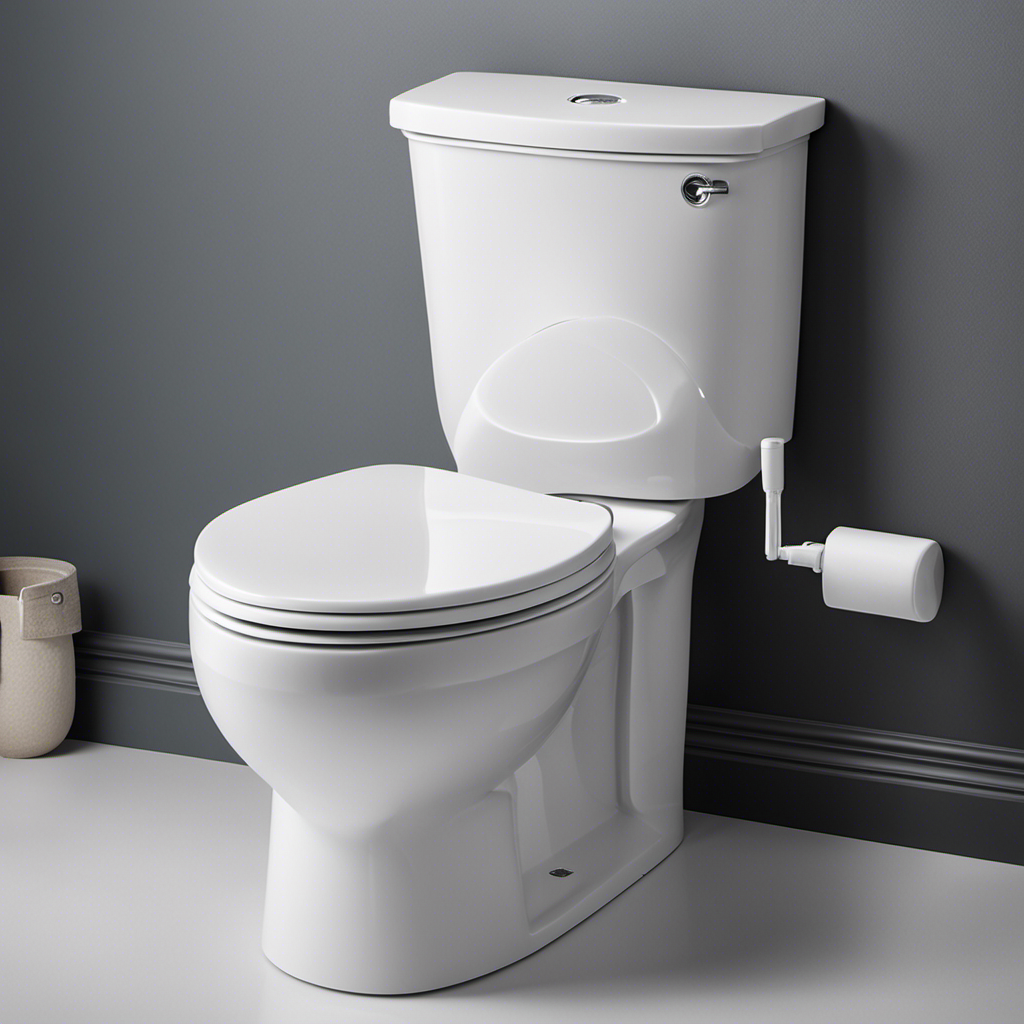As I delve into the topic of composting toilets, I can’t help but wonder: How much is a composting toilet?
In this article, I will explore the various factors that affect the cost of these eco-friendly sanitation systems. By comparing the price range of different models and uncovering the hidden costs of installation and maintenance, we can gain a better understanding of the true investment required.
So, let’s dive in and discover the best deals on composting toilets together.
Key Takeaways
- The cost of a composting toilet is influenced by factors such as size, capacity, type of composting system, materials used, and additional features.
- Prices for composting toilet models can vary widely, with self-contained models starting around $500 and central unit composting toilets ranging from $1,000 to $3,000 or more.
- There are hidden costs associated with installing and maintaining a composting toilet, including regular maintenance, specific additives, and potential need for professional assistance.
- Composting toilets offer a return on investment through long-term cost savings, reduced water usage, and the ability to use compost as fertilizer.
Factors That Affect the Cost of a Composting Toilet
There are several factors that can affect the cost of a composting toilet.
One of the main factors is the size and capacity of the toilet. Larger toilets with higher capacity tend to be more expensive than smaller ones.
Another factor is the type of composting system used. Different systems, such as self-contained or central systems, can vary in cost.
Additionally, the materials used in the construction of the toilet can affect its price. High-quality, durable materials may result in a higher cost.
Other factors include additional features such as ventilation systems, odor control mechanisms, and ease of maintenance.
The location and availability of composting toilets can also influence their cost.
All these factors contribute to the overall cost of a composting toilet, making it important to consider them when making a purchase decision.
Comparing the Price Range of Different Composting Toilet Models
When it comes to comparing the price range of different models, you can find a wide range of options available.
Composting toilets offer cost-effective options for those looking to reduce water usage and minimize their environmental impact. Budget-friendly choices can be found in both self-contained and central unit composting toilets.
Prices can vary depending on factors such as capacity, features, and brand. On the lower end of the price spectrum, you can find self-contained models starting around $500. These models are compact and suitable for smaller spaces.
Central unit composting toilets, on the other hand, can range from $1,000 to $3,000 or more, depending on their capacity and additional features.
It is important to consider your specific needs and budget when choosing a composting toilet.
The Hidden Costs of Installing and Maintaining a Composting Toilet
Installing and maintaining a composting toilet can come with hidden costs, such as regular maintenance and the need for specific additives. While composting toilets are known for their eco-friendliness and potential cost savings, it is important to consider the ongoing expenses that may arise.
Here are a few hidden costs to keep in mind:
-
Regular Maintenance: Composting toilets require regular upkeep to ensure proper functioning. This includes emptying the compost bin, monitoring moisture levels, and managing odors. Neglecting these tasks can lead to unpleasant odors, inefficient decomposition, and potential system failures.
-
Additives and Supplies: To aid in the composting process, specific additives like bulking agents, such as peat moss or coconut coir, and compost accelerators may be necessary. These additives help create the ideal environment for decomposition and improve compost quality.
-
Professional Assistance: In certain cases, professional help may be needed for the installation and maintenance of a composting toilet. Hiring a plumber or a composting toilet specialist can incur additional costs.
While composting toilets offer numerous benefits, it is essential to consider the hidden costs associated with their installation and maintenance. Proper understanding and planning can help mitigate these expenses and ensure a smooth and efficient composting toilet system.
Understanding the Return on Investment of a Composting Toilet
To fully understand the return on investment, you should consider the long-term cost savings and environmental benefits of using a composting toilet. A composting toilet can save you money in several ways. First, there is no need for expensive plumbing or septic systems, which can cost thousands of dollars to install and maintain. Second, composting toilets require less water usage, resulting in lower water bills. Third, the compost produced can be used as fertilizer, reducing the need to purchase chemical fertilizers.
In a cost benefit analysis, it is important to look at the long-term savings. While the initial cost of a composting toilet may be higher than a traditional flushing toilet, the long-term savings can outweigh this. For example, let’s consider the following cost comparison:
| Cost Comparison | Composting Toilet | Flushing Toilet |
|---|---|---|
| Installation | $2,500 | $5,000 |
| Water Usage | $100/year | $300/year |
| Fertilizer | $50/year | $100/year |
| Total | $2,650 | $5,400 |
As shown in the table above, over a 10-year period, the composting toilet would result in a total savings of $2,750 compared to a flushing toilet. Additionally, the environmental benefits of reducing water usage and chemical fertilizer usage should also be considered.
Tips for Finding the Best Deal on a Composting Toilet
Finding the best deal on a composting toilet can save you money in the long run. As an expert in composting toilet installation, I understand the importance of getting the best value for your investment.
Here are three tips to help you find the best deal:
-
Compare prices from different suppliers: Take the time to research and compare prices from various suppliers to ensure you are getting the best deal. Look for reputable suppliers that offer competitive prices.
-
Consider the long-term savings: While composting toilets may have a higher upfront cost compared to traditional toilets, they offer significant long-term savings. They can reduce water consumption, lower sewage fees, and provide nutrient-rich compost for your garden.
-
Look for discounts and promotions: Keep an eye out for discounts, promotions, and sales events. Many suppliers offer special deals or discounts throughout the year, so it’s worth checking their websites or subscribing to their newsletters.
Frequently Asked Questions
Are Composting Toilets Legal in All Areas?
Composting toilets are legal in most areas, but regulations may vary. They offer numerous benefits, including reducing water usage, recycling waste into nutrient-rich compost, and minimizing environmental impact.
Can Composting Toilets Be Installed in Any Type of Building?
Composting toilets can be installed in a variety of buildings, including residential homes, cabins, and even commercial spaces. They offer numerous benefits, such as reducing water consumption, minimizing waste, and providing nutrient-rich compost for gardening.
How Often Does a Composting Toilet Need to Be Emptied?
Composting toilets need to be emptied every few months, depending on usage and size. Regular maintenance, such as adding bulking agents and proper ventilation, can extend the emptying interval. The benefits of composting toilets include reducing water usage and producing nutrient-rich compost.
Can Composting Toilets Be Used in Cold Climates?
Yes, composting toilets can be used in cold climates. Proper composting toilet maintenance, such as adding bulking agents and managing moisture levels, can help ensure efficient decomposition and odor control even in colder temperatures.
Are There Any Health Risks Associated With Using a Composting Toilet?
When it comes to using a composting toilet, there are potential health risks to consider. Odor can be a nuisance, and if not managed properly, there is a potential for contamination.
Conclusion
In conclusion, composting toilets offer a sustainable and cost-effective solution for waste management.
With the average cost of a composting toilet ranging from $1,000 to $3,000, it may seem like a significant investment. However, considering the potential savings in water bills and sewage fees, along with the environmental benefits, it becomes a worthwhile investment in the long run.
In fact, studies have shown that households can save up to 30% on their water bills by switching to composting toilets. This statistic highlights the financial and ecological advantages of adopting this innovative technology.










